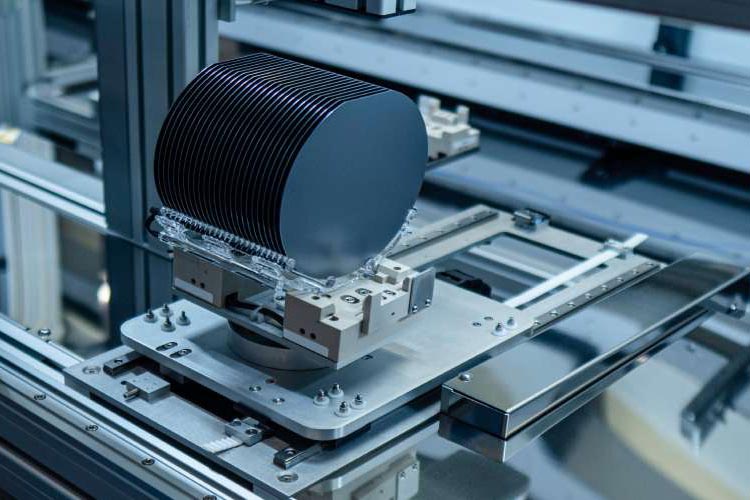The Conundrum Facing International Semiconductor Companies as They Struggle to Raise Wafer-Fab Production
The cutting-edge technology will provide R&D endeavors a significant boost, but current limitations in wafer manufacture are a big bottleneck.
According to a recent survey conducted by Counterpoint Research, global semiconductor wafer fabs brought in an additional $120 billion in revenue in 2022, an increase of 9 percent from the previous year. To add to the shock value, analysts say this explosive expansion comes after years of a logistics sector imbalance, component shortages, currency fluctuations, and a general macroeconomic downturn. Customers’ massive expenditures in the mature node devices across various areas, including 5G, AI, automotive, HPC, and IoT, have turned a potentially dire situation into an extremely positive one for the wafer fabs. A whopping $95 billion was made by the top five suppliers, who all provide services and systems.
After three years of uninterrupted expansion, the market for wafer fab equipment is expected to see a 10% annual decline in revenue to $108.45 billion in the coming year. Extreme ultraviolet (EUV) lithography, on the other hand, has a bright future because of the continuous deployment of EUV in logic and memory, while the market for WFE appears bleak in 2023. Moreover, worldwide, foundries are ramping up 3-nm node chip production with the help of FinFET designs, Gate-All-Around transistors, and increased utilization of EUV technology.
According to Dale Gai, associate director at Counterpoint Research, TSMC has begun developing innovative capacities in 7/6nm and 5/4nm in response to falling market demand, but the company is continuing to invest almost as much money in the 3-nm process node as it had in the first half of 2023. In light of the massive supply chain disruption caused by the COVID-19 pandemic, it is important to highlight that prices in many subsectors of the semiconductor industry have risen sharply. However, the entire car sector has seen soaring growth as the electric vehicle technology gains enormous pace.
However, prices in the data center and industrial industry have increased due to the unexpectedly high demand for chips during the epidemic. Inflation has also contributed to the slow expansion by dampening demand for consumer electronics and mobile phones. Demand for microchips is rising around the world as artificial intelligence (AI), startups, and other technologies continue to grow rapidly.

Since the global economic downturn has affected many different sectors, semiconductor manufacturers must decide whether or not to boost wafer fab output. Many companies throughout the world are taking an interest in today’s manufacturing and end-to-end design expertise. While the availability of such cutting-edge technology is sure to boost R&D efforts, the lack of advanced wafer fabrication remains a significant barrier to entry. Due to the high cost of construction and the large volume of water required, there are currently only a few number of wafer fabs in operation. The role of government subsidies and incentives is crucial here; the Chinese government has already promised to invest roughly USD 73 billion in semiconductor subsidies, but the governments of the United States, Japan, and Europe have all failed to match that amount.
There have been no significant unifications of investment in the preceding three quarters, so each country is investing on its own without adequate research or understanding. Experts agree that production must be ramped up significantly since consumers have a greater need for high-quality devices. About 150 300-mm fabs exist worldwide; 19 in the USA and another 33 each in China and Taiwan. Because of this, the ratio of supply to demand remains artificially high. The 200-mm fab continues to be a hub of activity and production, with consistent demand across process nodes from 90nm to 180nm. There are a total of 230 200mm fabs in the world, 49 of which are located in the MENA and EMEA regions, and 51 in the USA.
The yearly growth of the WFE market seems to be the focus here. According to a previous report by CircuitDigest, several factors, including rising demand from the consumer and B2B electronics industry and constant technological advancements in the semiconductor and telecom industries, are expected to drive the demand for semiconductor wafer fab equipment from 2019 to 2030. In the next years, additional considerations, such as machinery and silicon wafer, will aid in evaluating the relevant market. Most crucially, recent advancements in wafer technology have enabled denser packaging of devices like transistors and MEMS (micro-electro-mechanical system), laying the groundwork for unique prospects that may be used by a wide range of businesses around the world.
According to a survey by the investment firm MarketWatch, the value of the global wafer fab market in 2021 was USD 62930 million, and it is projected to reach at USD 97470 million by 2030, expanding at a compound annual growth rate (CAGR) of 5.6% between 2022 and 2030. However, according to Verified Market Research, the WFE market was worth USD 68,989.03 million in 2021 and is projected to reach USD 164,669.67 million by 2030, expanding at a CAGR of 8.04 percent between 2023 and 2030. The expansion of this industry has been driven by technical advances in recent years. This expansion might be attributed to the shrinking form factors and increasing memory capacities of several communication equipment in the telecom sector.

The report segments the WFE market by region, breaking it down into LATAM, EMEA, NAP, and AP. In 2021, the Asia-Pacific region captured the largest share of this market, and its share is anticipated to grow at a CAGR of 8.53 percent over the estimated period. The region’s dominance can be attributed to the existence of well-established supply networks for semiconductor devices throughout countries like China, Taiwan, and Japan. The demand for IC chips and SIC wafers is predicted to rise in tandem with the expansion of the consumer electronics and automotive product markets.
In addition, the enormous expansion of this industry is facilitated by the presence of a large number of suppliers in South Korea and India. North America was the second largest region that year, and it was expected to contribute significantly to expansion. The government of the Asia-Pacific area, however, has provided enormous subsidies and incentives, which have propelled the region to the forefront of the market. The WFE market is expected to expand significantly in the next years on the back of expanding demand and income, the development of increasingly sophisticated gear and technology, and awareness-raising initiatives.







